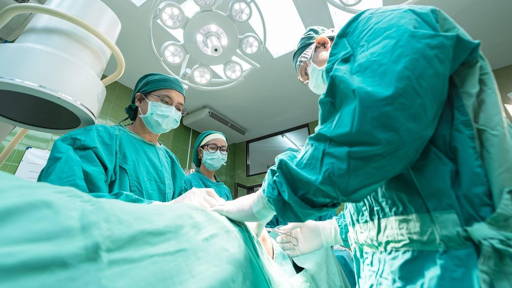Researchers at the Technical University of Munich (TUM) have developed a medical robot system to treat life-threatening tension pneumothorax in the chest cavity. The researchers are presenting the robot doctor at the Automatica trade fair. In the future, the system should be able to perform telemedicine procedures during evacuation flights. The robotic system was developed as part of the iMEDCAP project.
In tension pneumothorax, air accumulates in the chest cavity. The pressure this creates can compress the lungs, heart, and large blood vessels. This can happen, for example, after an injury such as a gunshot wound. The air cannot escape and continues to accumulate, increasing the pressure in the chest, compressing the lungs, and ultimately affecting the heart and large blood vessels. The heart rate increases, blood pressure drops, and eventually the circulatory system collapses.
In short, tension pneumothorax is life-threatening and must be treated within minutes to prevent the patient from dying. “Tension pneumothorax is often overlooked, but it is easy to treat by inserting a decompression needle into the chest so that the trapped air can escape,” says Carolin Müller, a researcher at the Clinic and Outpatient Clinic for Traumatology at TUM Hospital.
Independently operating robotic arm
For the future treatment of patients in inaccessible locations, the researchers have developed a robotic arm extension, a so-called “end effector” that combines a decompression needle, similar to the needle-catheter system used for vein transplantation, with an ultrasound device. The needle can only be inserted in the Monaldi or Bülau positions in the second and fifth intercostal spaces. These points can be accurately located using ultrasound. The system can also determine whether there is a pneumothorax.
The new mechanism, developed by Müller in collaboration with researchers from the Chair of Microtechnology and Medical Device Technology (MiMed) at TUM, pushes the needle and the catheter around it through the skin. The catheter remains in the body while the needle is withdrawn, allowing the air to escape. “This buys crucial time to treat patients with tension pneumothorax, for example after a chest injury resulting from a traffic accident or a gunshot wound,” explains Prof. Peter Biberthaler, director of the Clinic and Outpatient Clinic for Traumatology at TUM Hospital.
Treatment during evacuation
One of the applications of the system under consideration is the rapid evacuation of seriously injured patients from danger zones and crisis areas. For this purpose, remotely controlled Avilus Grille drones are being used and are currently being tested. By attaching the newly developed robotic arm to the drone, the injured patient can then be treated remotely with the robot during the evacuation flight.
The MiMed Rescue Robotics research group is also developing other robot modules that can be used to treat injured patients remotely. These include administering medication, stopping severe bleeding by applying a tourniquet, or injecting atropine during a chemical emergency. “Our robot modules can perform a number of tasks that need to be carried out immediately after an accident. It is crucial that the application is robust and fault-free when every second counts,” concludes MiMed chair holder Prof. Tim Lüth.
Remote robotic surgery
Performing surgery with a surgical robot that is remotely controlled by a surgeon has been in full development in recent years. A few weeks ago, for example, a prostate operation was performed in Belgium in which the patient was at the AZORG hospital in Aalst and the surgeon operating the surgical robot was several dozen kilometers away.
In the US, a test setup was used in early 2024 to successfully perform a remote surgery in which the surgeon was on Earth and the ‘patient’ was in the ISS, some 400 kilometers above the Earth's surface.









